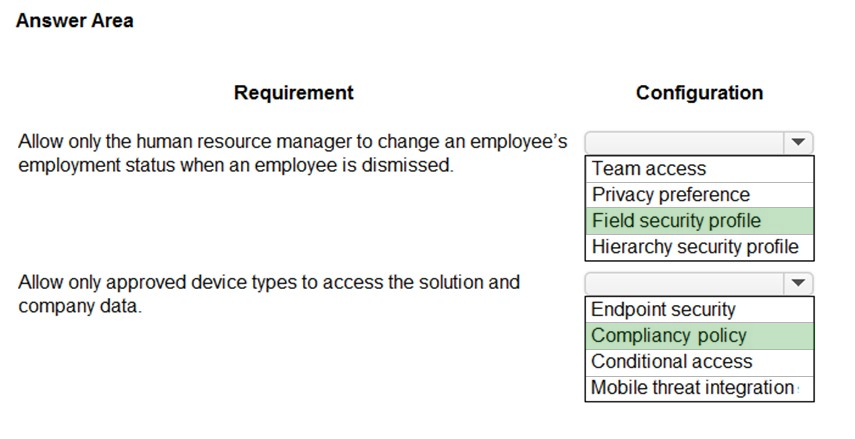

HOTSPOT -
A company is creating a Power Platform solution to manage employees.
The company has the following requirements:
✑ Allow only the human resource manager to change an employee's employment status when an employee is dismissed.
✑ Allow only approved device types to access the solution and company data.
You need to recommend a solution that meets the requirements.
What should you recommend? To answer, select the appropriate options in the answer area.
NOTE: Each correct selection is worth one point.
Hot Area:

kenwj2342
Highly Voted 3 years, 5 months agoalaamohy
3 years, 5 months agogiogo
Highly Voted 3 years, 2 months agoloftuscheek
Most Recent 1 month, 2 weeks agouberlord
6 months, 3 weeks agoymiya
2 years, 1 month agorober13
1 year, 9 months agoCRMBug
2 years, 5 months agoEzekielibe
3 years, 1 month agoIcky
2 years, 10 months agouberlord
6 months, 3 weeks agooriginalwitness
2 years, 11 months agoIcky
2 years, 10 months agom3ngi3
2 years, 8 months agoPrt33k
3 years, 4 months ago